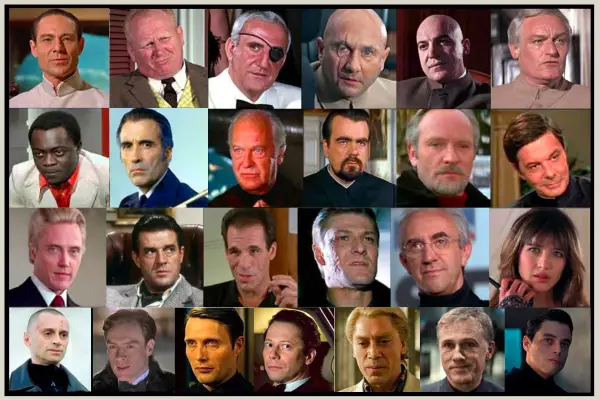James Bond Villains
Few characters in the world of literature and film are as enduring and universally recognized as Ian Fleming’s James Bond. Agent 007 is the epitome of sophistication and and unrivaled daring, seamlessly blending the charm and wit of a gentleman with the fearless decisiveness of a seasoned spy. His encounters with a diverse cast of James Bond villains across his missions further underscore his prowess and adaptability, solidifying his status as an icon of global popular culture.
As important as he is to the success of the franchise, however, so are the villains he comes up against. Each one adds depth, conflict, and excitement to every different narrative. They’re unique, eccentric, and often embody the fears and threats of their respective eras, making Bond villains integral to the longevity and relevance of the series.
They provide a foil to Bond’s character, challenging him physically, intellectually, and morally. From the cold ruthlessness of Dr. Julius No to the personal vendetta of Alec Trevelyan, and the iconic megalomania of Ernst Stavro Blofeld, James Bond villains often steal the show with their elaborate schemes, unusual characteristics, and memorable lines.
Join us as we take a look at the main villain from each of the official Eon James Bond movie, taking a look at each villain’s motivations, methods, and the threats they posed in the world of James Bond.
James Bond Villains – 1960s
Dr. No – Dr. Julius No
Dr. Julius No is a fascinating character, serving as the inaugural antagonist in the first James Bond movie, Dr. No (1962). Born of a German father and a Chinese mother, Julius No is a brilliant scientist who possesses a sense of icy detachment. Having lost both of his hands in a radiation accident, he has had them replaced with strong, durable metal prosthetics, hinting at his willingness to augment his body in the pursuit of his goals.
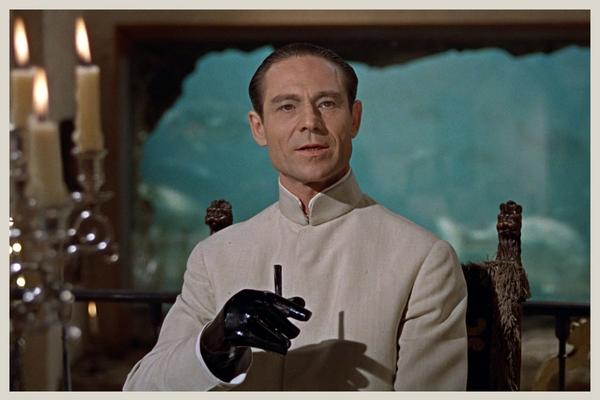
Dr. No’s motivation is rooted in a desire for power and dominance, particularly over nations through the control of resources. He’s affiliated with the criminal organization SPECTRE, with ambitions to disrupt a U.S. space launch using a powerful radio beam.
In terms of methods, Dr. No operates from his fortified base on the fictional island of Crab Key, Jamaica. He is methodical, calculated, and exerts control over his workers through fear. His scheme to sabotage the U.S. space program represented a substantial geopolitical threat during the space race era, demonstrating the potential consequences of unchecked criminal ambition, thereby setting a high bar for future James Bond villains.
From Russia with Love – Ernst Stavro Blofeld
Ernst Stavro Blofeld, the infamous leader of the nefarious organization SPECTRE, makes his first appearance in the James Bond series in From Russia with Love (1963). However, his role is shrouded in mystery, as viewers never see his face, only getting glimpses of his body and hearing his voice, and of course his white Persian cat.
This tactic of hiding his face cleverly builds suspense and intrigue around his character, making his unseen presence ominous and threatening.
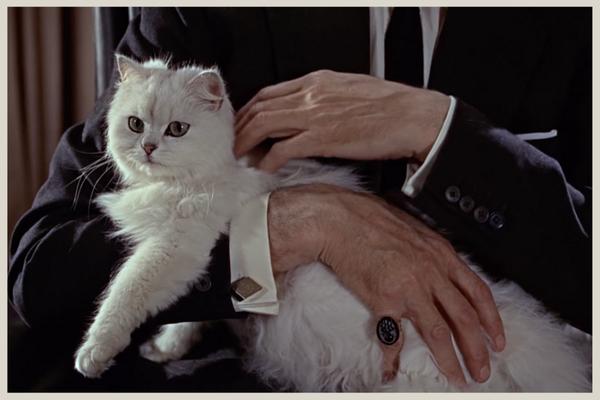
The main threats Bond faces in the film, however, come from Blofeld’s underlings – Donald “Red” Grant and Rosa Klebb. Blofeld’s motivations remain veiled, yet it is clear that he’s using Grant and Klebb to fulfill his schemes of disrupting world order and promoting chaos, for his organization’s gain.
Grant is a formidable physical threat to Bond, showcasing deadly combat skills and ruthless efficiency as an assassin. On the other hand, Rosa Klebb, with her poisonous-tipped shoe, symbolizes the deceptive and treacherous nature of SPECTRE’s operations.
In terms of methods, Blofeld orchestrates a complex plot to steal a cryptographic device and kill Bond. Blofeld’s overarching threat lies in his calculated orchestration of events, manipulating others to carry out his grandiose, destructive plans.
Goldfinger – Auric Goldfinger
In Goldfinger (1964), James Bond is pitted against one of his most memorable adversaries, Auric Goldfinger. Portrayed by Gert Fröbe, Goldfinger is an affluent businessman with a maniacal obsession for gold, which is reflected in everything from his name to his choice of weapons.
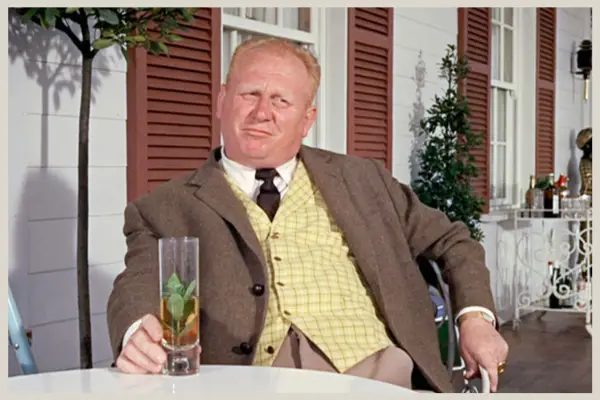
Goldfinger’s motivation is rooted in greed and the pursuit of wealth. His scheme, known as Operation Grand Slam, aims to increase his personal wealth by irradiating the gold reserves in Fort Knox, rendering them worthless and thereby increasing the value of his own stockpile.
Auric Goldfinger is a man of vast resources and cunning. He employs a variety of methods to achieve his goals, including the use of a deadly hat-wielding henchman named Oddjob and a lethal laser to intimidate and dispose of enemies.
The threat Goldfinger poses is significant not only to Bond but also to the global economy. By targeting Fort Knox, Goldfinger’s scheme would have catastrophic repercussions on the U.S. and global economy if successful, demonstrating the potential of individual greed to precipitate widespread disaster.
Thunderball – Emilio Largo
Emilio Largo is the main antagonist in Thunderball (1965). As the proud and intimidating Number Two in the global criminal organization SPECTRE, Largo embodies ruthless determination and flamboyant villainy.
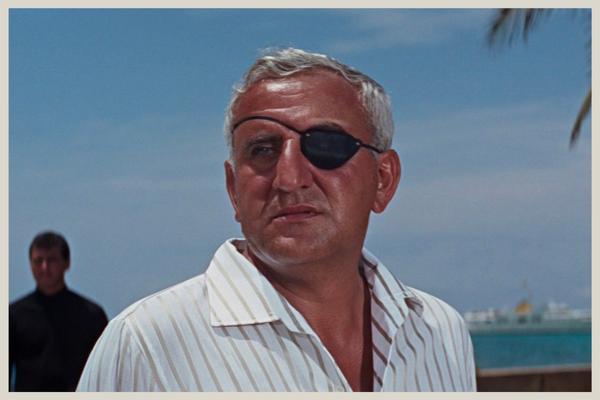
Portrayed by Adolfo Celi, Largo’s primary motivation is to further the aims of SPECTRE and establish his authority within the organization. To do this, he devises a scheme to steal two atomic bombs from a NATO plane and threatens to detonate them in major cities if a hefty ransom isn’t paid.
Largo’s methods are as bold as they are ruthless. Operating from his yacht, the Disco Volante, he commands a crew of loyal and fearsome henchmen. He employs a variety of tools in his arsenal, including a pool of sharks used to dispose of those who displease him.
The threat posed by Largo is massive. By holding two nuclear bombs and threatening mass destruction, Largo puts the entire world at risk. His willingness to inflict such widespread harm showcases the lengths he, and by extension SPECTRE, are willing to go to achieve their goals, marking him as one of the most formidable threats James Bond has had to face.
You Only Live Twice – Ernst Stavro Blofeld
Ernst Stavro Blofeld, the enigmatic leader of SPECTRE, is fully unveiled in You Only Live Twice (1967). Donald Pleasence‘s unforgettable portrayal of Blofeld, with his facial scar and menacing voice, has become an enduring image of villainy in popular culture.
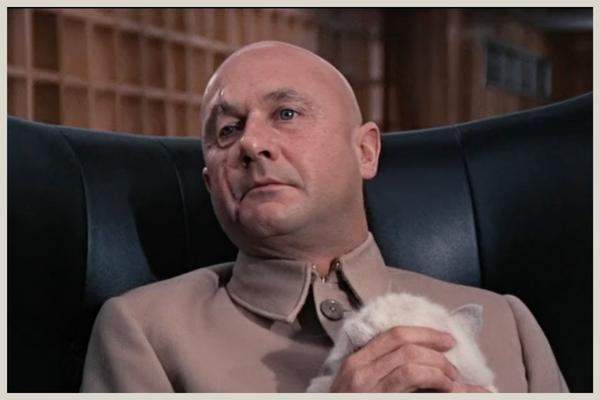
Blofeld’s motivations are global domination and causing geopolitical instability, which are key to enhancing SPECTRE’s power and influence. His plan in You Only Live Twice involves hijacking both American and Soviet spacecraft in an attempt to instigate a war between the two superpowers.
He employs several ingenious methods to achieve his objectives. He operates from a volcano lair in Japan, equipped with an elaborate control room, a spacecraft launch site, and even a monorail system. His network of loyal henchmen, along with his iconic pet, a white Persian cat, contribute to his menacing persona.
The threat posed by Blofeld is global. His scheme to pit the United States and the Soviet Union against each other threatens to plunge the world into a catastrophic war. The encounter between Bond and Blofeld in this film is highly significant, as it finally reveals the face behind the global threats that Bond has been combating.
On Her Majesty’s Secret Service – Ernst Stavro Blofeld
This time played by Telly Savalas, Ernst Stavro Blofeld emerges once more as the primary antagonist in On Her Majesty’s Secret Service (1969), revealing a side of him that’s equally dangerous but more personal in his conflict with Bond.
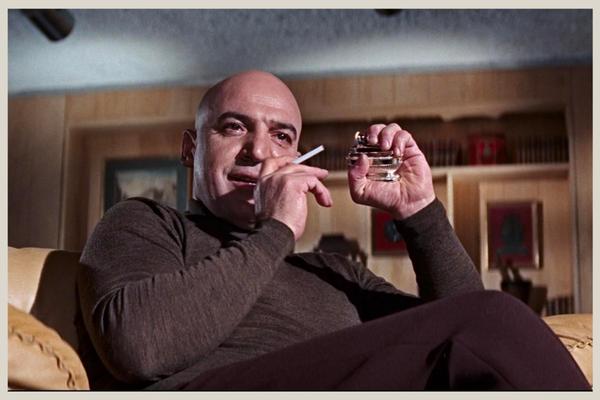
In this film, Blofeld’s motivation extends beyond global disruption. Operating under the alias ‘Comte Balthazar de Bleuchamp’, Blofeld seeks legitimacy and recognition for his claim of nobility, while simultaneously developing a scheme that threatens global agriculture.
Blofeld operates from a research institute in the Swiss Alps, where he brainwashes a group of women, called ‘Angels of Death’. These women, unknowingly carrying a virus capable of destroying crops and livestock, are to be deployed across the world, so Blofeld can hold nations to ransom.
Blofeld’s threat takes on a personal dimension in this film. Not only does his scheme risk causing global famine, but he also brings tragedy into Bond’s life, by gunning down Bond’s wife, Tracy. This personal loss adds a new layer to Bond’s enmity with Blofeld and further amplifies the threat Blofeld poses, making him a truly unforgettable villain.
James Bond Villains – 1970s
Diamonds Are Forever – Ernst Stavro Blofeld
In Diamonds Are Forever (1971), Ernst Stavro Blofeld is back as the main villain for the third time. This time played by Charles Gray, he makes a return with a unique blend of charm, cunning, and malice, furthering his position as Bond’s arch-nemesis.
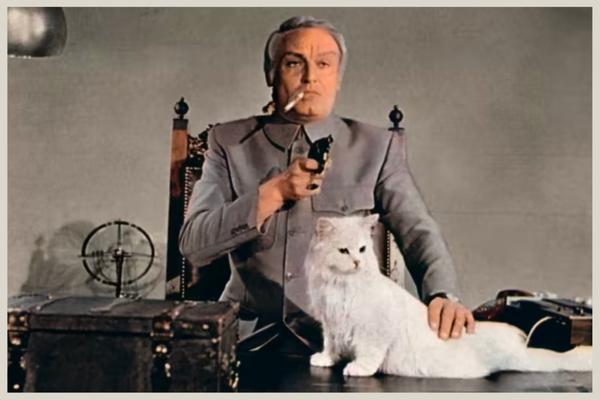
Blofeld’s motivations remain largely the same – global domination and furthering the influence of SPECTRE. His scheme in this film involves acquiring a large cache of diamonds to build a space-based laser weapon, with which he intends to hold the world to ransom.
Blofeld’s methods showcase his audacity and creativity. From creating multiple decoys of himself to confuse his enemies, to utilizing a vast network of smugglers to procure diamonds, Blofeld’s operation is marked by complexity and grandeur.
The threat posed by Blofeld in this film is both global and intensely personal. On a global scale, his space laser weapon could inflict devastating damage, causing widespread chaos and fear. On a personal level, his return signifies a renewed challenge for Bond, as he continues to grapple with the loss inflicted by Blofeld in their previous encounter. Through his actions, Blofeld continues to exemplify the very essence of a James Bond villain.
Live and Let Die – Dr. Kananga / Mr. Big
In Live and Let Die (1973), James Bond encounters Dr. Kananga, also known as Mr. Big, a unique villain portrayed with charismatic intensity by Yaphet Kotto. Kananga is the Dictator of the fictional Caribbean island of San Monique, while Mr. Big is his fearsome alter ego, a gangster who operates in the United States.
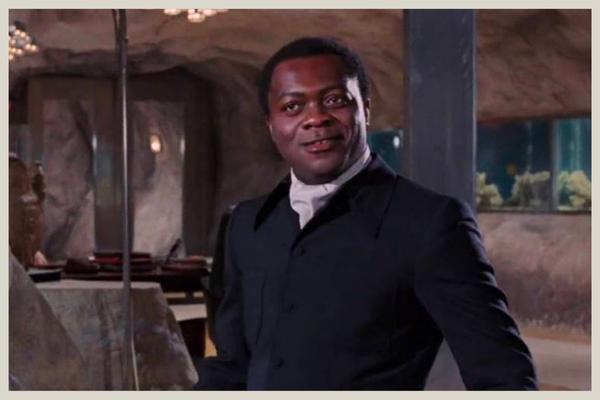
Kananga’s motivation stems from his ambition to dominate the international drug trade. His plot involves mass-producing and distributing heroin free of cost initially, intending to eliminate competition and create a vast number of new addicts, who would then become his captive market.
His methods are a blend of political power, criminal intimidation, and the exploitation of voodoo belief. From his dual positions of power, he commands a vast network of followers, who serve him both out of loyalty and fear. Kananga’s use of a psychic tarot reader, Solitaire, to predict his enemies’ actions, and his use of voodoo imagery add an element of psychological warfare to his tactics.
The threat posed by Dr. Kananga is significant, aiming to create social havoc by massively increasing drug addiction. His scheme, if successful, would have devastating impacts on societies, making him one of the most socially threatening villains in the James Bond series.
The Man with the Golden Gun – Francisco Scaramanga
Francisco Scaramanga, the antagonist in The Man with the Golden Gun (1974), is an assassin of extraordinary skill and precision. Played by Dracula legend Christopher Lee, Scaramanga is renowned for his use of a golden gun and his demanding fee of one million dollars per kill.

Scaramanga’s motivations are driven by a desire for personal satisfaction and power. He sees Bond as a worthy adversary, challenging him to a duel to prove who the superior assassin is. He also plans to sell a powerful piece of technology, the “Solex Agitator,” which can harness the power of the sun, to the highest bidder.
Scaramanga’s methods are both bold and refined. He operates from a private island in Chinese waters, complete with luxurious amenities and a sophisticated energy facility. His deadly golden gun, which disassembles into innocuous personal items, is a testament to his skill and resourcefulness.
The threat posed by Francisco Scaramanga is two-fold. On one hand, his prowess as an assassin poses a direct threat to Bond’s life. On the other hand, his plan to sell the Solex Agitator, a device that could potentially provide limitless energy or be weaponized, risks destabilizing the global power balance, making Scaramanga a significant villain in the Bond universe.
The Spy Who Loved Me – Karl Stromberg
In The Spy Who Loved Me (1977), James Bond faces off against Karl Stromberg, an eccentric and powerful businessman with a disturbing vision for humanity. Played by Curd Jürgens, Stromberg’s obsession with the sea defines his character and fuels his malevolent schemes.
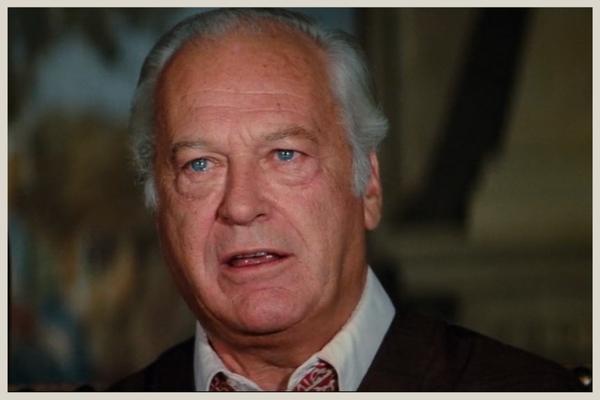
Stromberg’s motivation is unique among Bond villains. Disillusioned with the world, he dreams of creating a new civilization under the sea, which he believes would be free from the conflicts and chaos of the surface world. To realize this vision, he plots to instigate a global war that would annihilate humanity on land.
Stromberg’s methods are reflective of his maritime fascination. He operates from a city under the sea, named Atlantis, and employs a range of marine-themed resources, including a supertanker that can capture submarines, and a loyal henchman with metal teeth, Jaws.
The threat posed by Stromberg is catastrophic. By seeking to provoke a nuclear war between superpowers, he risks the lives of millions and threatens to plunge the world into chaos and devastation. His plan, driven by a distorted utopian vision, marks him as one of the most ideologically driven villains in the James Bond series.
Moonraker – Hugo Drax
In Moonraker (1979), Hugo Drax emerges as a villain with grandiose ambitions and a chilling disregard for human life. Played by Michael Lonsdale, Drax is a billionaire industrialist who has turned his considerable resources towards a dark and deadly objective.
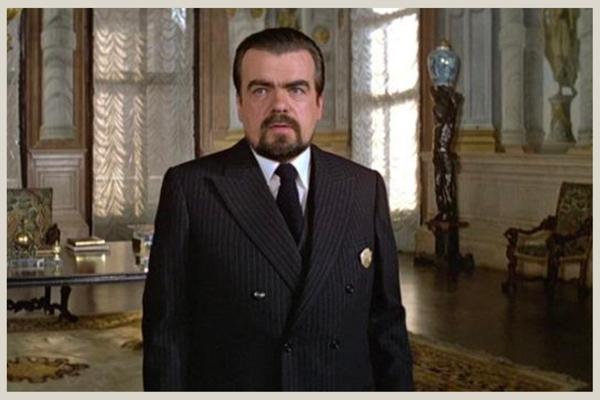
Drax’s motivation centers around his desire to create a perfect human race. He aims to do so by destroying all human life on Earth and then repopulating the planet with carefully chosen men and women currently housed on his space station.
Drax’s methods are as vast as his wealth allows. He uses his corporation, Drax Industries, to build a fleet of Moonraker space shuttles. These shuttles are instrumental in his plan to release a nerve gas into Earth’s atmosphere, a gas lethal to humans but harmless to animals and plants.
The threat posed by Drax is existential. His genocidal plan threatens every human being on Earth. His choice of space as a base of operations represents a new level of audacity and grandeur, escalating the stakes of Bond’s mission to stop him. And, his intent to create a ‘perfect’ human race echoes some of the darkest episodes of real-world history.
James Bond Villains – 1980s
For Your Eyes Only – Aristotle Kristatos
In For Your Eyes Only (1981), Bond confronts the deceptive and cunning Aristotle “Aris” Kristatos, a character brought to life by Julian Glover. Aris is a former resistance fighter and a respected figure in his community, but behind this façade, he engages in criminal activities.
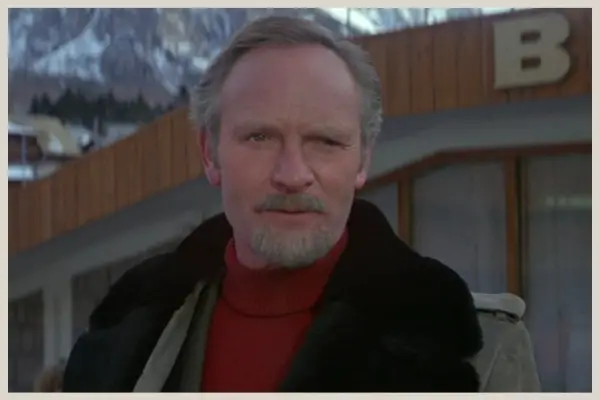
Aris’ primary motivation is to gain wealth and maintain his status as a respected intelligence informant. He seeks to retrieve the ATAC (Automatic Targeting Attack Communicator) system, a device capable of controlling Britain’s entire submarine fleet, with the intention of selling it to the Soviet Union.
Kristatos’ methods are shrouded in deceit. He manipulates James Bond and others into believing that his former ally, Milos Columbo, is the real villain seeking the ATAC. Kristatos maintains a veneer of respectability, operating out of a seemingly legitimate business front and sponsoring promising athletes to enhance his social standing.
The threat posed by Kristatos is significant, especially concerning the Cold War balance of power. If he succeeds in delivering the ATAC system to the Soviets, it would give them a massive advantage, potentially escalating tensions and destabilizing the precarious peace.
Octopussy – Kamal Khan
Kamal Khan, portrayed by Louis Jourdan in Octopussy (1983), is a suave but ruthless exiled Afghan prince with a penchant for the high stakes world of illicit jewel trade.
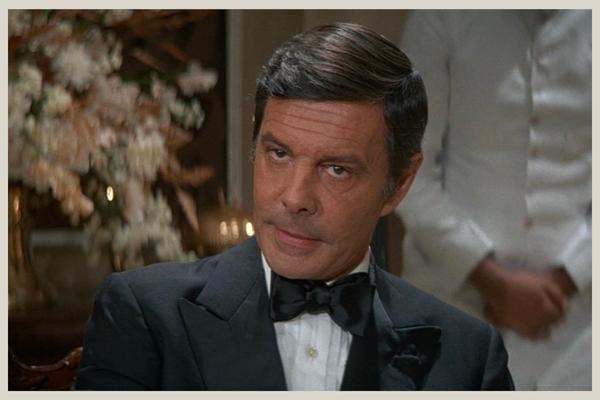
Khan’s motivation is primarily to amass wealth and power, but his greed is not his only driver. Khan collaborates with a rogue Soviet general, who plans to detonate a nuclear bomb at a US airbase in West Germany, a scheme intended to provoke disarmament in Western Europe.
Khan’s methods embody his sophisticated and manipulative character. Operating from a palace in India, he skillfully orchestrates a jewelry smuggling operation, using the traveling circus of Octopussy, an ally and love interest of Bond, as a cover.
The threat Kamal Khan poses is immense, combining geopolitical disruption with personal ambition. His involvement in the nuclear bomb plot not only threatens countless lives but could also destabilize the balance of power during the tense Cold War period.
A View to a Kill – Max Zorin
In A View to a Kill (1985), Max Zorin is a chilling villain of immense intellect and ruthless ambition. Brought to life by Christopher Walken, Zorin is a product of a failed Nazi experiment, leading to his enhanced intelligence but also making him psychopathic.
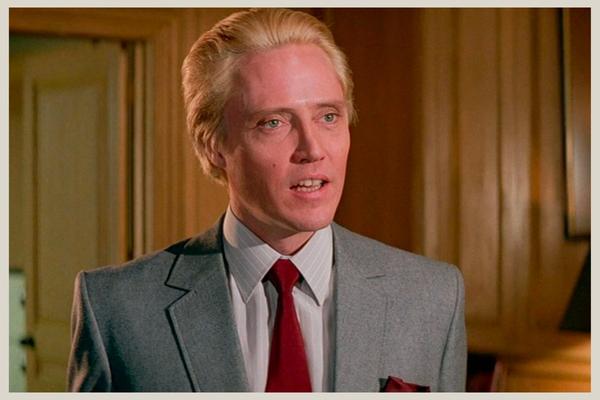
Zorin’s motivation is rooted in a desire to monopolize the global microchip market. His scheme involves triggering a massive earthquake in Silicon Valley, which would eliminate his competition and consolidate his hold on the market.
Zorin’s methods are as ruthless as they are ingenious. Operating under the guise of a successful businessman and horse breeder, he uses his resources and intelligence to develop a plan involving geology, explosives, and subterfuge. His disregard for human life and his delight in chaos are evidenced when he mercilessly guns down his own workers to ensure the success of his plot.
The threat Zorin poses is immense. His plan threatens the lives of millions in Silicon Valley and risks destabilizing the global economy. His unique combination of cold intellect and ruthless ambition make Max Zorin one of the most memorable James Bond villains in the series.
The Living Daylights – General Georgi Koskov
In The Living Daylights (1987), General Georgi Koskov is a seemingly defected Soviet general whose ambitions and treacheries run deeper than they initially appear.
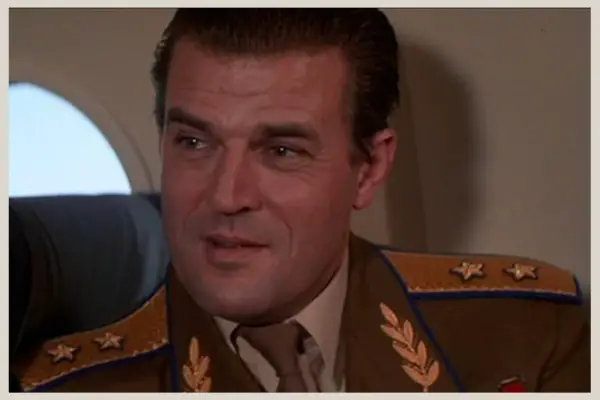
Portrayed by Jeroen Krabbé, Koskov’s motivations are driven by personal gain and power. He concocts a complicated plot involving fake defection, arms deals, and deceit, intending to embezzle government funds and provoke hostilities between British intelligence and the KGB.
Koskov successfully manipulates MI6 into believing he’s a defector, only to stage his own ‘kidnapping’ back into Soviet hands. His elaborate ruse is facilitated by his partnership with Brad Whitaker, an American arms dealer and a military history enthusiast.
The threat posed by Koskov is both geopolitical and personal. By seeking to reignite tensions between the British and Soviet intelligence agencies, he threatens to destabilize the precarious peace of the Cold War era. As well as this, his plot to embezzle funds and profit from weapon deals shows he’ll do anything for personal gain.
Licence to Kill – Franz Sanchez
Franz Sanchez, portrayed by Robert Davi in the 1989 film Licence to Kill, is a ruthless and powerful drug lord with a vicious streak. His portrayal is particularly notable for its brutal realism, departing from the flamboyant villains seen in previous Bond films.
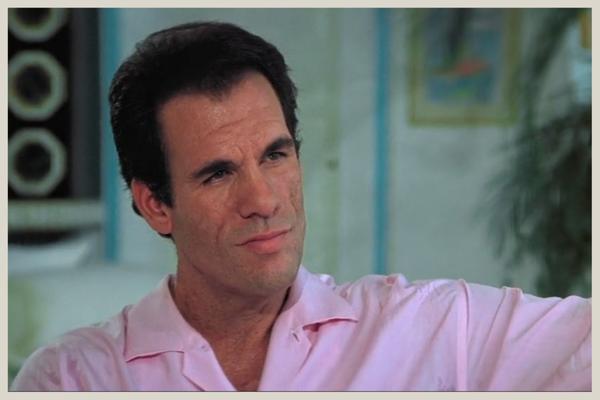
Sanchez’s motivation is driven by his desire to expand his drug empire. He seeks to use political corruption and violence to solidify his position as the leading power in the Latin American drug trade.
Sanchez’s methods are cruel and merciless. He maintains control through fear, as seen in his brutal treatment of disloyal associates. However, he also displays a cunning business acumen, creating a system to dissolve cocaine in petrol for transportation, later retrieving the drug through a sophisticated chemical process.
The threat Sanchez poses is both personal and widespread. On a personal level, he maims Bond’s friend, Felix Leiter, and kills Felix’s wife, which instigates Bond’s vengeful pursuit. Broadly, his activities in the drug trade, if unimpeded, would continue to spread harm and devastation throughout the societies. Sanchez’s brutal approach and violent reign make him one of the darkest and most dangerous villains Bond has faced.
James Bond Villains – Pierce Brosnan Era
GoldenEye – Alec Trevelyan
In GoldenEye (1995), Alec Trevelyan emerges as one of the most personal and formidable adversaries Bond has ever faced. Played by Yorkshireman Sean Bean, Trevelyan, also known as 006, was once Bond’s colleague and friend in MI6.

Trevelyan’s motivation is rooted in a quest for revenge against the British government for its perceived betrayal of his parents, who were Lienz Cossacks. He seeks to enact his revenge by using the satellite weapon, GoldenEye, to devastate Britain’s economy.
Trevelyan’s methods are rooted in his training as a 00 agent. He possesses skills that match and challenge Bond’s, and he has a deep understanding of MI6’s operations. His organization, Janus, is named for the two-faced Roman god, reflecting Trevelyan’s duplicitous nature.
The threat Alec Trevelyan poses is immense and multifaceted, and his planned economic attack on London threatens to cause worldwide chaos. And his personal relationship with Bond adds a layer of emotional complexity rarely seen in Bond’s interactions with his enemies. This personal vendetta, coupled with Trevelyan’s lethal abilities, creates an intense conflict and makes Trevelyan one of the most memorable villains in the James Bond franchise.
Tomorrow Never Dies – Elliot Carver
Elliot Carver is the main villain in Tomorrow Never Dies (1997). Played by Jonathan Pryce, he’s a media mogul who seeks to use his power over information to incite global chaos for his benefit.
Carver’s motivation is a mix of extreme narcissism and a ruthless desire for increased power and influence. He aims to instigate a global war between China and the UK to secure broadcasting rights in China and boost the ratings of his news networks.
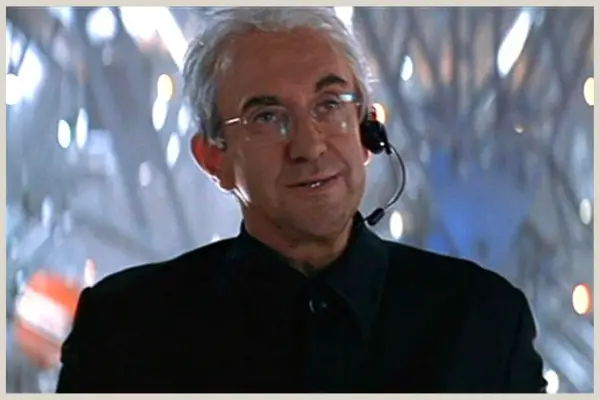
Carver’s methods reflect his deep understanding of media and public perception. Using a stealth ship, he sinks a British warship and stages a Chinese attack, intending to trigger a full-scale war. He uses his media empire to control the narrative, presenting manipulated facts to an unsuspecting public.
The threat Carver poses is profound. His manipulation of information threatens to provoke international conflict, costing countless lives and destabilizing global relations. Not only this, but his control over the media highlights the potential dangers of misinformation, a particularly relevant theme in the contemporary world.
While Carver may not possess the physical prowess of previous James Bond villains, his intelligence and strategic manipulation of global communication channels makes him a unique and formidable adversary.
The World is Not Enough – Elektra King and Renard
In The World Is Not Enough (1999), Bond faces a complex web of villainy in the characters of Elektra King, portrayed by Sophie Marceau, and Renard, who was played by Robert Carlyle.
Elektra King, the daughter of a wealthy oil tycoon, initially appears to be a victim but is later revealed to be a manipulative and ruthless villain. Her motivations are rooted in revenge against her father, who refused to pay her ransom when she was kidnapped by Renard. Following this betrayal, Elektra develops a bond with Renard and they become lovers and partners in crime.
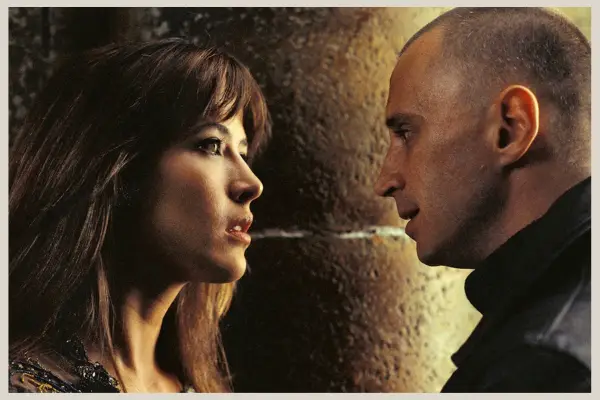
Renard, a former KGB agent, has a unique condition due to a bullet lodged in his brain: he cannot feel physical pain and gains increasing strength but at the cost of his life. Despite his impending death, he is motivated by his twisted love for Elektra and a desire to wreak chaos.
Their methods involve a plan to detonate a nuclear submarine in the waters of Istanbul, causing a nuclear meltdown that would contaminate the Bosphorus, thereby increasing the value of Elektra’s oil pipeline.
The threat posed by Elektra King and Renard is substantial, threatening countless lives and potentially disrupting the balance of power in the energy sector. Their intimate knowledge of Bond’s mission, coupled with their shared ruthlessness, makes them a potent duo of James Bond villains.
Die Another Day – Gustav Graves
In Die Another Day (2002), Gustav Graves, portrayed by Toby Stephens, is a charismatic British entrepreneur who is later revealed to be Colonel Moon, a North Korean military officer who was presumed dead.
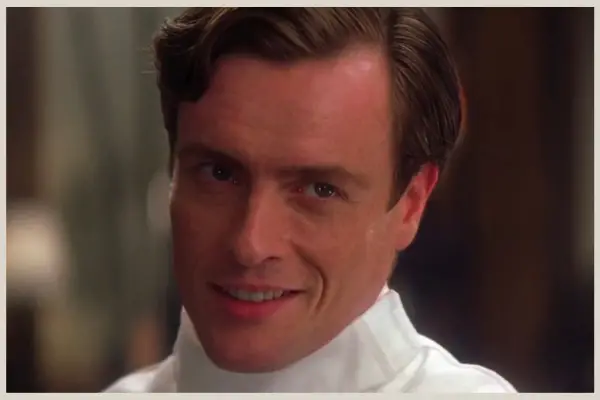
Graves’ motivations are multi-layered. As Colonel Moon, he harbors resentment for his father’s pacifist policies and aims to reunify Korea under his rule. He also seeks personal revenge against James Bond, who was instrumental in his supposed ‘death.’
Graves’ methods reflect his ambitious and innovative nature. He undergoes a radical gene therapy to alter his appearance, subsequently resurfacing as the flamboyant British tycoon, Gustav Graves. He creates a space-based weapon, Icarus, capable of focusing solar energy on a specific location, intending to use it to invade South Korea.
The threat posed by Graves is enormous. His plan could ignite a war on the Korean Peninsula, resulting in countless casualties and destabilizing the geopolitical balance in the region. And, his space weapon could potentially wreak havoc in other parts of the world.
James Bond Villains – Daniel Craig Era
Casino Royale – Le Chiffre
In Casino Royale (2006), Le Chiffre, portrayed by Mads Mikkelsen, emerges as a calculated and formidable adversary. Le Chiffre, meaning “The Number” in French, is a private banker to the world’s terrorists.
Le Chiffre’s motivations stem from financial necessity. After losing his clients’ money in a failed plot to profit from the stock market, he sets up a high-stakes poker game in Montenegro in a desperate bid to recoup the lost funds.
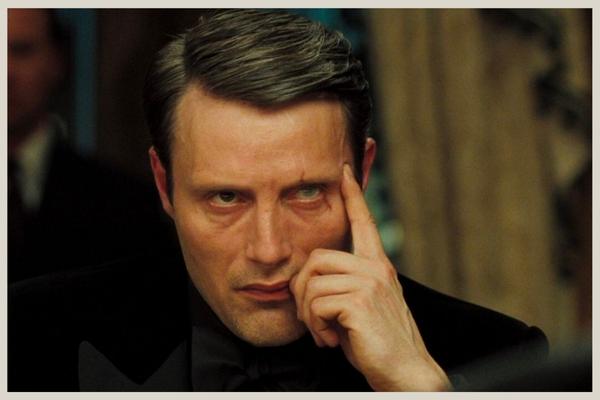
Le Chiffre’s methods involve using his mathematical genius and poker skills. His cold, calculating demeanor is offset by a physical vulnerability, marked by his bleeding eye, which humanizes him to a degree. That said, he is brutal when threatened and isn’t shy to use violence and torture in his pursuit of his objectives.
The threat Le Chiffre poses is significant despite being primarily financial. By providing financial services to terrorists, he indirectly fuels global instability. His plot to win back the money through the poker game could have allowed terrorist activities to continue unhindered, making his defeat a critical necessity.
As well as this, his brutal confrontation with Bond results in one of the most memorable and painful torture scenes in the Bond series, which, let’s just say Bond will be glad Mr. White surprisingly saved him.
Quantum of Solace – Dominic Greene
In Quantum of Solace (2008), Dominic Greene, portrayed by Mathieu Amalric, is an environmental entrepreneur who is secretly a high-ranking member of the criminal organization, Quantum.
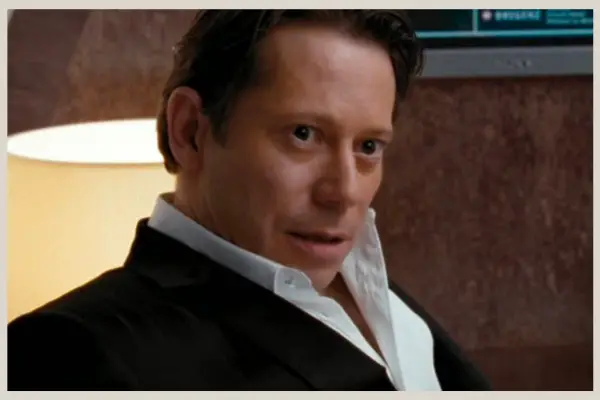
Greene’s motivations are power and control, hidden behind his public façade as an environmentalist. He aims to control a significant portion of Bolivia’s water supply, using it as a bargaining chip to control the Bolivian government.
Greene’s methods involve manipulation and deceit on a global scale. He presents himself as a philanthropist seeking to protect land for ecological purposes, but he’s really securing the land to monopolize its water resources. He also brokers a deal to restore a deposed general to power in exchange for control of the country’s water supply.
The threat posed by Greene is significant. His control over water, an essential resource, could destabilize the Bolivian government and plunge the country into chaos. And his role in Quantum suggests a wider network of influence and corruption, threatening global security.
Skyfall – Raoul Silva
In Skyfall (2012), Raoul Silva stands as a stark embodiment of vengeance. Formerly known as Tiago Rodriguez, Silva was once an esteemed MI6 agent until he was betrayed by M, leading him down a path of revenge.
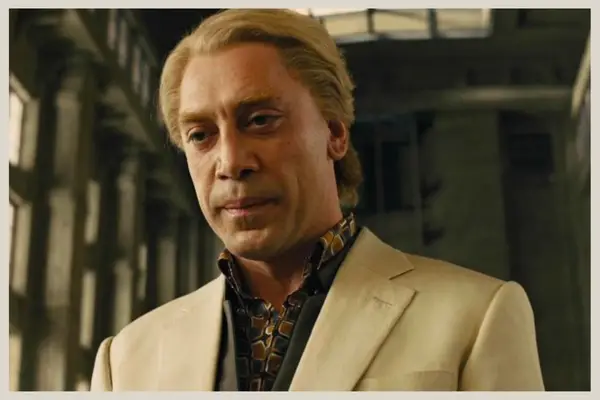
Played by Javier Bardem, Raoul Silva’s motivations are deeply personal. Abandoned by M and subjected to torture during a mission, Silva seeks to enact revenge against his former superior and expose MI6’s secrets, aiming to dismantle the organization he once served.
Silva’s methods involve cyber-terrorism, a testament to his prowess as a former intelligence agent. He orchestrates a series of attacks on MI6 and manipulates events to facilitate his own capture, furthering his plans from within MI6’s custody.
The threat Raoul Silva poses is twofold. His attacks on MI6 are a direct threat to global security. On a personal level, his vendetta against M results in her death, making him one of the few villains to strike such a personal blow against Bond. His deep-seated resentment and ruthless strategies make Raoul Silva a formidable and one of the most memorable James Bond villains in the franchise.
Spectre – Ernst Stavro Blofeld
Ernst Stavro Blofeld makes a dramatic return in Spectre (2015), portrayed by Christoph Waltz. This time around, Blofeld is not just a threat to global security, but he is also revealed to have a personal connection with Bond.
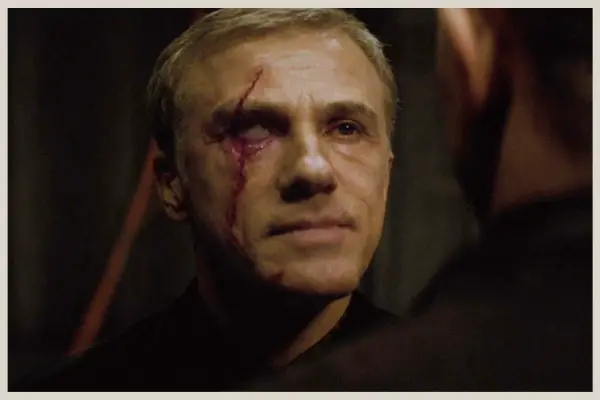
Blofeld’s motivations are rooted in a childhood grudge. He resents Bond for the perceived preferential treatment Bond received from Blofeld’s father. This personal enmity amplifies his overarching aim of global domination through his criminal organization, Spectre.
Blofeld’s methods involve a vast network of crime and terrorism orchestrated through Spectre. He’s behind the scenes, and we learn he was pulling strings in many of the events of the previous films. He also initiates a surveillance project to gain access to global intelligence data, leveraging the influence of compromised officials.
The threat Blofeld poses is both personal and far-reaching. His surveillance project threatens to infringe upon global privacy and could give Spectre unchallenged power. His personal connection to Bond adds a level of emotional depth to their conflict not usually seen in Bond’s dealings with his foes, adding yet another layer to this already iconic James Bond villain.
No Time To Die – Lyutsifer Safin
In No Time To Die (2021), Lyutsifer Safin, played by Rami Malek, is an enigmatic figure who meticulously executes a revenge plot against SPECTRE. Armed with the potent British nanoweapon, ‘Heracles,’ Safin’s vendetta unfolds dramatically.
The last villain of Daniel Craig movies, Safin’s motivation is rooted in vengeance. By turning the Heracles weapon against SPECTRE during a meeting in Cuba, he cripples the organization, seizing control of its resources, including The Poison Garden – a production hub for Heracles.
Safin employs calculated manipulation and intimidation to advance his agenda. He coerces Madeleine Swann, psychiatrist to SPECTRE leader Ernst Stavro Blofeld, into delivering the deadly nanoweapon to Blofeld. This act eradicates SPECTRE and leads to Blofeld’s death, marking the climax of Safin’s revenge.
The threat Safin poses is monumental. He intends to use Heracles to govern global terrorism, determining who lives and who dies. His relentless pursuit of Madeleine and her daughter, Mathilde, leads to their abduction, fueling a desperate rescue mission by Bond and his colleague, Nomi.
Safin’s grand design culminates in a tense standoff with Bond. Though he offers Bond a deal to spare Mathilde, negotiations collapse. Safin then infects Bond with a dose of Heracles meant for Madeleine and Mathilde, condemning Bond to a tragic fate. Bond then kills Safin and chooses to stay on Safin’s lair as it goes up in flames, with 007 choosing death to protect Madeleine and Mathilde.
James Bond Villains
The villains of the James Bond series offer an array of fascinating and complex adversaries for 007. These characters, with their grandiose schemes and larger-than-life personalities, have consistently elevated the stakes and kept audiences riveted over the decades.
From the icy cool of Dr. Julius No, the recurrent menace of Ernst Stavro Blofeld, to the chilling revenge plot of Lyutsifer Safin, the series has consistently produced iconic villains that are integral to the Bond mythos.
Through their pursuit of power, revenge, or dominance, these villains have shaped and redefined the villainous characters. And the legacy of James Bond villains continues to influence not only future Bond films but also the broader genre of action cinema, marking them as some of the most memorable antagonists in film history.


